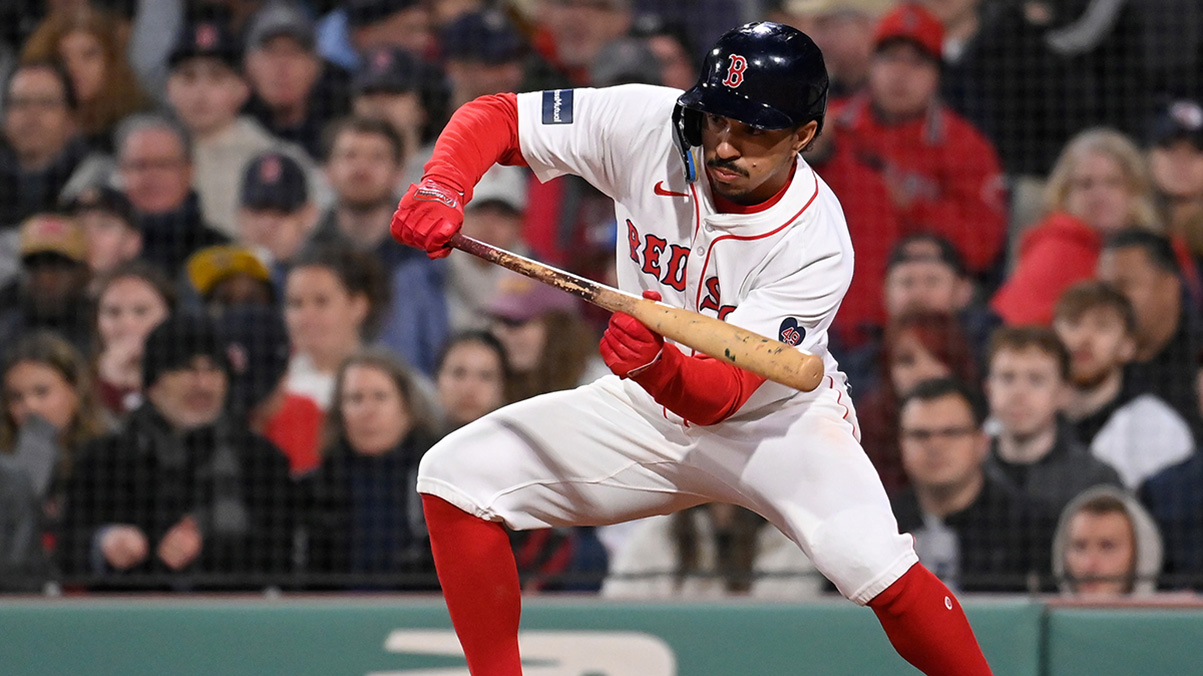SCOTTSDALE, Ariz. — Chaim Bloom impressed Red Sox ownership during his interview by dissecting a handful of deals with the Rays that revealed the kind of creativity John Henry wanted to add to Boston's front office.
One was the pursuit of Charlie Morton, Houston's All-Star right-hander, who received one of the biggest pitching contracts in Tampa history at a modest two years and $30 million. The 35-year-old rewarded Tampa's faith with a third place finish in the Cy Young Award voting.
Another was a complicated three-way trade with the A's and Rangers that sent second baseman Jurickson Profar to Oakland, prospects to Texas, and reliever Emilio Pagan to the Rays. A compensatory pick and international bonus money changed hands, too, for good measure.
It is that second deal and its many moving parts that caught the eye of Red Sox chairman Tom Werner.
"We studied decisions that they made and we were impressed," Werner said. "The total decision-making was impressive. They went out in the free agent market and got Charlie Morton. They made a great three-way trade for Pagan. You can just go up and down that roster and say they found talent in very creative ways."
So how did it happen? The four executives primarily involved — Texas GM Jon Daniels, Oakland counterpart David Forst, and the Tampa duo of Bloom and GM Erik Neander — weighed in from the GM meetings this week. Their observations and recollections shed light on the kind of decision-maker Bloom will be in Boston — nimble, inventive, and connected.
"Very smart and very creative," Forst said. "I've always respected Chaim. He has always dealt honestly with us and been up front."
Merely reading the summary of the trade illustrates its complexity. The A's sent Pagan and a competitive balance pick to Tampa, and infielder/outfielder Eli White and international bonus money to the Rangers. The Rangers sent minor league pitcher Rollie Lacy to the Rays and received three prospects in return: left-handers Brock Burke and Kyle Bird, and right-hander Yoel Espinal, which helped Tampa relieve a roster crunch.
Boston Red Sox
Got all that? Good. The first thing worth noting is that most three-way deals are born of failure, and this was no exception.
"Typically, they don't happen overnight," Neander said. "I don't think anyone's seeking that. There's a sincere interest in finding common ground between two clubs. You run the well dry, and then it's like, 'All right, do we have any other business going on that we could introduce to this negotiation to find a way to get over the finish line?' And that's effectively what happened."
The trade started with Daniels, who played the role of go-between. The A's wanted Profar to be their everyday second baseman, but they lacked the pieces to complete a deal on their own. Because Daniels had maintained regular contact with the Tampa front office — primarily Neander — he knew the Rays wanted Pagan, a hard-throwing reliever who hadn't quite put it together in his first two seasons. And the Rays knew which prospects Daniels valued, primarily Burke.
"Jon Daniels was in the middle," Forst said. "All we knew was there was a team on the other side. Everything went through Jon. We talked to him about Profar and Pagan and the comp pick, and he said, 'Look, to be up front, some of these pieces are going elsewhere.' Anytime you have a three-team deal, sometimes everybody knows, but a lot of times there's kind of a middle manager working both sides. So Jon deserves a lot of credit for working with us and working with Chaim and Erik on that side."
The deal would not have happened without steady communication, a skill Bloom will bring to Boston.
"They've always done a good job of constant dialogue over the year," Daniels said of Bloom and Neander. "Not just trade deadline. Not just winter meetings. Constant dialogue, understanding what your goals are, being up front about their goals. It's where I think they have a lot of information. The way they've built their club, they have a heavy-transactional process, if that's what you want to call it, and more information allows them to make better decisions. Sometimes you'll deal with a club and you'll feel like it's one-way, that they're just pulling information out. I've always felt good dealing with them that it's two-way. They want to know what you're looking at, but they're also happy to share what their goals are."
Added Bloom: "I think a lot of that fell out of our organization having good communication with both organizations, but especially with Texas, who was trying to broker it."
Striking a deal is only half the battle, though. The Rays had to identify the right target, and in Pagan, they hit a home run. Tampa represented his third team in three years, and he was coming off a so-so 2018 that saw him go 3-1 with a 4.35 ERA while flashing intermittent command.
But he blossomed in Tampa. His max velocity jumped from 96 to 99 mph and he ended up posting a career-low 2.31 ERA while saving 20 games and striking out a career-best 12.3 batters per nine.
"He stood out as someone who had a chance to have a little more success than he'd had to date," Bloom said. "We knew towards the end of the season that that harder breaking ball was coming into play more. I don't think any of us, if we're being honest, could have expected that he'd turn in the season that he did. That just speaks to getting a great result from hopefully a good and rigorous process."
The Rays preach organizational humility — it's why they might be the worst team in the league at stealing signs, because it's simply not part of their culture — and they'd be the first to note that they got a little lucky with Pagan, who actually opened the season in Triple-A. But they saw an opportunity for growth if he could reshape his breaking ball, a hard slider that he throws with more of a cutter grip, and the results were tremendous.
"I'm not at all surprised that the Rays got themselves involved," Forst said. "We always felt like we and the Rays see things similarly in how we evaluate players. We didn't like giving up Pagan — I didn't know he was going to be throwing 99 and closing games — but we liked Pagan and obviously there's value in the comp pick. So not surprised at all that Chaim and Erik had their fingers in our business."
The comp pick presented its own challenges, because it cannot be traded more than once and thus had to move as part of one big deal. Awarded to the smallest-market and lowest-revenue teams, this particular pick landed at No. 40 overall, the area of the draft where Tampa had previously nabbed stalwarts like All-Star Carl Crawford and Cy Young Award winner Blake Snell. The Rays used the pick on college right-hander Seth Johnson, allowing them to build for the future even as they hoped Pagan would help in the present.
Speaking of which, when Forst discovered Tampa was the third team in the deal, did he pause to question what he and his own evaluators had missed?
"Absolutely," he admitted. "There's a number of teams we feel that way about, where they pick up a player and you go, 'Huh, should we have been involved?' It's not unique to Tampa, but they're a team that we see similar to us in the way they operate."
The Pagan trade is the kind of move the Red Sox will have to make to remain competitive with ownership intent on slashing payroll. Fortunately, they now employ one of its architects.
"Chaim will do really well, because at the end of the day, he's consistent, he communicates well, it's clear," Neander said. "He's trustworthy. There's no agenda. The purpose of the call is whatever's laid out. These relationships are built on trust, and he's someone that can be trusted."
Boras explains why J.D. Martinez didn't opt out of Sox contract>>>>>
Click here to download the new MyTeams App by NBC Sports! Receive comprehensive coverage of your teams and stream the Celtics easily on your device.


